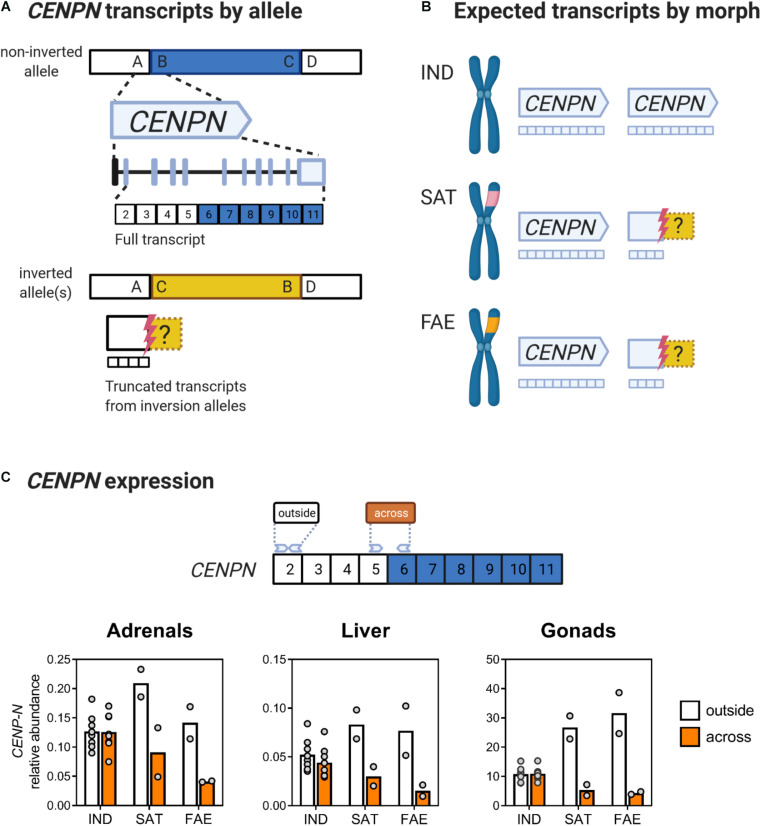FIGURE 2.
The inversion breakpoint gene CENPN has reduced expression in inversion morphs, across tissues. (A) Schematic of the order of DNA segments (A-D) on the ancestral allele. The B-C segment (blue) corresponds to the 4.5 Mb inversion region. Segment A flanks the proximal breakpoint, and D flanks the distal breakpoint. The CENPN gene spans across the proximal breakpoint and the full transcript contains 11 exons, with the first exon being a non-coding UTR (black). Exons are colored based on their position relative to the corresponding proximal breakpoint: white for outside and blue for inside the corresponding region that becomes inverted. In the inversion allele(s) the order of DNA segments is changed to A, C, B, D with the inversion segment C-B (yellow) reversed from its ancestral orientation. The proximal breakpoint (red bolt) interrupts the CENPN gene between exons 5 and 6, thus a truncated four-exon CENPN transcript is expected from inversion alleles. Uncertainty about where transcription stops continuing into the inversion is denoted by the dashed yellow box. Exon structure redrawn from NCBI Calidris pugnax Genome Viewer. (B) Independents produce full CENPN transcripts from two ancestral alleles, whereas inversion morphs, which are always heterozygotes for the inversion, are predicted to produce full transcripts from one ancestral allele and only truncated transcripts from their respective inversion allele. (C) CENPN expression in adrenal glands, liver and gonads for all three morphs plotted as abundance relative to two reference genes (see section “Materials and Methods” for details). In Independent males, expression of exon 2 (white), which is outside of the inverted region, and exons 5 and 6 (orange), which span across the breakpoint, are near identical, whereas in Satellites and Faeders, expression of exons 5 and 6 is much lower than that of exon 2. The amplicon containing exons 5 and 6 spans across the breakpoint and is thus only present on the non-inverted allele in inversion morphs. Sample sizes for adrenals and liver were (8 Independents, 2 Faeders and 2 Satellites) and for gonads were (7 Independents, 2 Faeders, and 2 Satellites). Created with BioRender.com.

